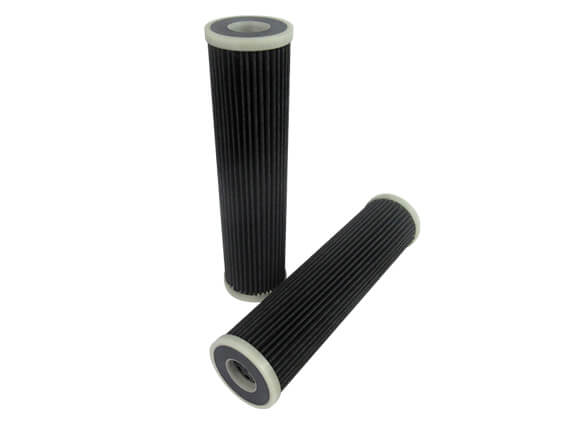What Is An Activated Carbon Filter
2025-06-30 Share:
In the context of increasingly serious environmental pollution problems today, people are paying more and more attention to the safety of drinking water. As a mature and efficient water treatment technology, activated carbon water filters have become the core components of household and industrial water purification systems around the world.
What is activated carbon?
Activated carbon is not an ordinary carbon block, but a highly efficient adsorption material made from natural materials through special activation treatment. Its raw materials mainly come from natural materials such as coconut shells, wood, sawdust, fruit shells or coal.
The production process involves two main methods: thermal activation and chemical activation. In thermal activation, the raw materials undergo high-temperature carbonization at 300-500°C in an oxygen-deficient environment, and then are activated in water vapor at 850-950°C. Chemical activation is to treat the raw materials with chemicals such as phosphoric acid or potassium hydroxide before carbonization. This method requires lower temperatures but can also produce a highly porous structure.
Maintenance Methods
*
Activated carbon filters need to be replaced regularly, which is key to their effectiveness and safety. Granular activated carbon (GAC) filters are usually replaced every 6-12 months, while carbon block filters may need to be replaced every 3-6 months.
* Obvious signs that it is time to replace include yellowing of the filter and a significant decrease in the clean water flow rate. If not replaced in time, the accumulated contaminants will make the water quality less safe than tap water.
* New activated carbon should be rinsed with clean water before first use to remove residual powdered activated carbon. To improve adsorption, the water should be moderately pre-filtered before entering the activated carbon filter to remove large particles of impurities. When installing, adding a 2-3 cm thick sponge to the bottom and top of the filter can effectively block large particles of impurities such as algae.
* For systems with high usage, regular backwashing can remove accumulated contaminants in the filter layer and extend the life of the filter. However, this operation usually requires a professional to perform.
Application Area
Activated carbon filters are widely used in many fields due to their excellent purification effect.
1. Activated carbon plays a key role in composite water purification systems. The most typical one is the RO reverse osmosis system, in which activated carbon is used as a pretreatment stage to remove residual chlorine and protect the sensitive RO membrane from oxidation damage.
2. Ozone-bioactivated carbon technology is one of the mainstream processes for deep treatment of drinking water. It combines ozone chemical oxidation, activated carbon physicochemical adsorption and biological oxidation degradation to efficiently remove a variety of pollutants.
3. In industrial production, activated carbon filters are an indispensable component for removing harmful substances from wastewater to meet emission standards.

